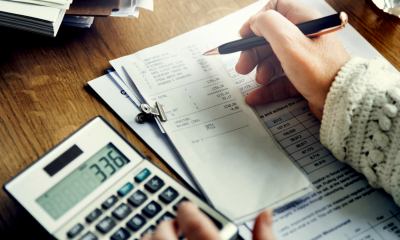
Keeping proper VAT records ensures you have a record of all the output tax (ie VAT on sales) you have charged, as well as the input tax (ie VAT on purchases) you have paid
As well as ensuring you comply with your legal obligations, maintaining accurate, current VAT records makes it easy to complete your VAT return and get the VAT you paid back.
Basic VAT records
You must keep complete, up-to-date VAT records that enable you to work out the correct amount of VAT to include in your VAT returns. You should keep your VAT records for at least six years, because you will need to show them to HM Revenue & Customs if or when asked.
These records must be in digital format. You need records of sales and purchases (and any adjustments such as credit notes) including details of how much VAT your business charged or paid. If you trade internationally, you need records of your imports and exports with all overseas territories, including the European Union. Your VAT records also must show details of any supplies you have given away or taken for personal use.
Your VAT records should include the VAT invoices you have been given for purchases - with details of the input tax you have paid - and copies of your sales invoices. Your records will also need to include a VAT account, showing how total input tax and output tax has been worked out to include in your VAT returns.
VAT records for Making Tax Digital
Making Tax Digital for VAT has meant that since 1 April 2019 all VAT registered businesses have been required to keep digital VAT records. VAT returns must be submitted using HMRC approved software.
Read more on VAT record keeping on the GOV.UK website.
Output tax and sales VAT invoices
In general, you must issue a VAT invoice to any VAT-registered customer when you sell standard-rate or reduced-rate goods or services. Retailers do not need to issue a VAT invoice unless asked for one, and can issue simplified VAT invoices for small sales.
VAT invoices must include:
- your business name and address
- a unique invoice number that follows on from the last invoice
- VAT registration number
- the customer’s name and address
- details of the goods sold
- the net cost (excluding VAT)
- the VAT charged
- the date of issue
- the tax point - the date used for VAT accounting - if this is different to the date of issue
For retail sales under £250 (including VAT), you can issue a less detailed VAT invoice
This must show:
- your name, address and VAT number;
- the date of supply;
- a description of the supplies;
- the amount (including VAT);
- the VAT rate charged.
The tax point
This is known as the basic tax point. It is usually the date goods were supplied or services completed.
There are some variations:
- If a VAT invoice is issued or payment is made before the basic tax point, the date of invoicing or payment becomes the tax point, whichever is the earlier.
- If you issue a VAT invoice up to 14 days after the basic tax point, the date the invoice was issued becomes the tax point. It is possible to agree an extension to the ‘14-day rule' by making an application to HM Revenue & Customs (HMRC).
- If you receive a VAT invoice up to 14 days after the basic tax point, you can assume the invoice date is the tax point, unless the invoice shows a separate tax point date.
- With continuous supplies, the tax point occurs when a VAT invoice is issued or payment is made - whichever is earlier.
Input tax
You can only reclaim the input tax you have paid if you have a valid VAT invoice (not a pro-forma) and you purchased the supplies for business use.
If you sell some goods or services that are exempt from VAT, you will not usually be able to reclaim all the input tax you have paid. Instead, you reclaim only the share of the input tax that relates to your standard or zero-rated sales.
You cannot reclaim input tax on any goods and services purchased for personal use. Other exclusions include input tax on company cars (unless these are used only for business), business entertainment and assets acquired when you purchase a business.
You must get your VAT records right - mistakes can lead to tax penalties, being unable to reclaim some of the VAT you have paid or even being liable for output tax you should have charged your customers but didn’t. If in doubt, take advice to make sure you put the right VAT systems in place.



